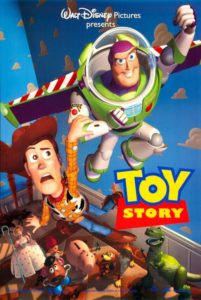
The story of how Toy Story, the first feature-length computer animated film, was created is well known. In the early ’90s, John Lasseter, Andrew Stanton, and others at the nascent Pixar teamed up with Disney to make a feature. After years of scripts written and trashed, an initial, disasterous screening of the first half of a movie everyone hated, and still more rewrites, a hit emerged. It made $350 million upon its initial worldwide release in 1995. Steve Jobs took Pixar public on the strength of it. Many consider it one of—if not the—greatest animated film of all time.
Curious, then, that the true story of where Toy Story’s story came from has been suppressed. Or maybe not so curious? Steve Jobs knew something about the power of images. Maybe he felt that the true story of Toy Story’s inspiration was better left in the dustbin of history.
Good luck searching the internet for it. You won’t find anything (unless it’s in the dark web, far from my prying eyes?). But at the time of the film’s release, a book was written detailing Toy Story’s origins, a book originally intended to be published at the time of the film’s home video debut. It never was.
It was printed, though. Copies exist, even if Pixar, Disney, and Apple would rather you not know it. Titled innocuously The Story of Toy Story, it consists of an oral history of Toy Story’s creation, from inspiration to finished film, as told by Jobs, Lasseter, Stanton, Jeffrey Katzenberg, etc. The book has no author, as such, but credit as Editor is given to one Jerry S. Fremont, about whom I can find nothing on the internet.
At Pixar, the book exists something in the manner of a secret handshake. Quotes are traded among those in the know, and everyone in the know, while not themselves in possession of a copy, knows a person who knows the person who is. Yes, the person. Any number of copies of the book may be extant, but the accepted assumption is that there is only one.
I haven’t seen a copy myself. But I know an ex-Pixar animator who knows someone who knows the person who has. Having himself made something of a hobby of collecting every known piece of information on the matter, this animator was willing to share with me what he knows.
So. From where did Toy Story’s story emerge?
It begins with a little-known Russian film made in 1934, or maybe 1935, or possibly 1937. Its original name is said to translate to something close to The End of Play (it was never subtitled and never played outside of the Soviet Union), but the name Soyuzkino ultimately released it under was (again, in approximation) As Dies Capitalism. They soon regretted releasing at all.
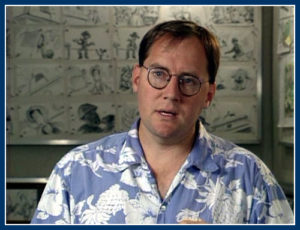
“The Soviets buried it,” says Lasseter. “It was more a ghost than a film. It flickered into existence and flickered out again just as fast.”
“It was the first movie to give inanimate objects the thoughts, desires, and emotions of humans,” says Stanton.
In the film, a group of children’s toys—a ceramic goat, a headless cloth doll, a tin fish, two matryoshkas of different sizes from different sets, a bicycle spoke bent into a figure eight, and a wooden drummer missing one arm (and one drumstick)—are left in a bucket next to a farmhouse on a cold winter’s morning by a child soon to die of consumption, there to freeze over a long and unremitting winter.
The story unfolds over the course of that winter and ends with the toys dying (apparently) in the cold, forever frozen in ice. It is filmed entirely in stop-motion animation.
There is little plot. Rather, the film explores relationships between the characters as they make excursions from the bucket in an ultimately vain attempt to survive the winter. The leader of the toys is the tin fish, Volodya, once the child’s favorite, now just as hopelessly abandoned as his companions. For the first time in his life, Volodya must accept that he is no better than the others. They are equals in the bucket.

The goat, Olya, has always resented Volodya, and, seeing this new weakness in his rival, rallies the other toys against him. Only young Yulia, the bicycle spoke, stands by Volodya. In the end it is Yulia who brings the toys together, Yulia who fashions a new arm and drumstick for Boris, and Yulia who must crush Zhenya, the smaller of the Matryoshkas, to ensure a peaceful winter’s freezing for the rest of them.
“It’s posing any number of questions,” says Lasseter. “Do we use violence to eliminate opposing beliefs? Do we accept death without a fight? And maybe most heartbreaking, do we have value as people if no one loves us?”
However, it was The End of Play’s political metaphor that stood out most prominently to what few Soviet audiences saw the film (even despite its blunt name change). In its simplest interpretation, the bucket was the USSR, the ice the Communist government, the toys the Soviet people. The film was quickly banned, and its creators sent to the gulag, including writer/director/photographer Amvrosi Svechnikov, a student in the late ‘20s of Sergei Eisenstein, whose uncredited second unit work on ¡Que viva México! has only recently come to light.
Svechnikov died while imprisoned, but even before filming began on The End of Play, he’d outlined possible follow-up films. Those outlines were kept safe by Svechnikov’s nephew and apprentice in the art of stop-motion, Grigoriy. It was Grigoriy who, as an expatriate in Switzerland, produced, in the late ‘40s and early ‘50s, six short sequels to his uncle’s work (which I hope to discuss in a future post).
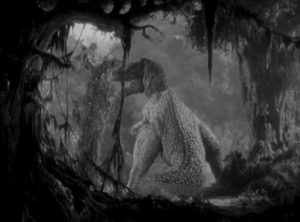
“Grigoriy’s stop-motion rivals Willis O’Brien’s,” says Lasseter, who claims to have seen three of Grigoriy’s follow-ups as a child in the ‘60s, projected on 16mm. Where these prints came from (and where they went) is unknown.
Grigoriy was said to have spoken often of his uncle’s childhood, and how the toys represented in The End of Play were ones Svechnikov had himself loved, until they were burned by striking industrial workers at the outset of the Bolshevik Revolution. Svechnikov was said to blame Lenin for the loss of his childhood.
The End of Play screened at only a small number of theaters before being pulled and banned. Few saw it. Not long afterwards, the outbreak of World War II ensured no one else would have the chance. The negative and what few prints existed were kept in Leningrad and presumed burned during the infamous siege.
In fact, one print survived.
A film-obsessed Nazi, Hans Hänchenhansler, came across cannisters containing 16mm reels of the complete film during the brutal winter fighting of ‘43/’44. Though he couldn’t have known what film it was he’d found, he took it anyway. But he wasn’t able to carry it far. Cold and starving, his fellow soldiers dying by the thousands, Hans hid the cannisters under the floorboards of a farmhouse just before retreating across the Dnieper.
“It’s an absurd story,” says Jobs. “It couldn’t have happened that way. Which is the only reason I believe that it did.”
Miracuously, Hans lived through the war. Following which his modest income allowed him to spend one month every summer traveling the Russian countryside in search of the farmhouse in which he’d hidden the cannisters.
In 1962, he found them. And, as luck would have it, upon screening the film, he recognized it immediately. How? Because Hans had seen Grigoriy’s sequels, themselves film rarities long ago lost to time, in the early ‘50s. Grigoriy, killed in a 1957 avalanche while hiking in the Alps, never distributed his sequels to The End of Play, but showed them in the film classes he taught. It is not known how Hans came to see Grigoriy’s films, but he must have, or The End of Play would have meant little to him.
Hans died in 1970 of unknown causes. His print of The End of Play was never discovered. But before his death, Hans transferred the film to videotape. On the tape, following the film, Hans appended a short film of himself explaining how he had come to possess The End of Play. This was faithfully reproduced on future copies, and copies of copies, and is the only reason we know how The End of Play came to be saved.
Its existence on videotape is how The End of Play came to be seen by a small number of animators and film aficionados during the ‘70s and early ‘80s before once again disappearing. Whatever number of video copies were made were lost. None have since been recovered.
“I’m not convinced it ever existed,” quips Jeffrey Katzenberg.
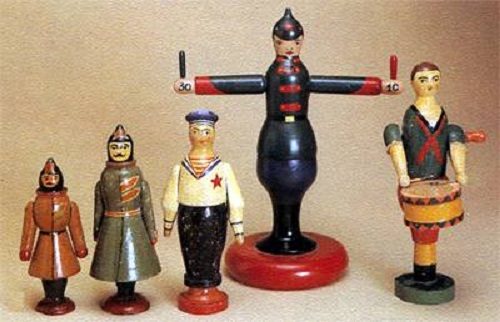
John Lasseter was one of the young animators who saw a video copy of The End of Play during his time at CalArts in the late ‘70s. It must have made a powerful impression. He talked of it often up to and through the production of his 1988 Pixar short Tin Toy, whose musical hero was directly inspired by The End of Play’s one-armed drummer. However, according to those who worked with Lasseter, following Tin Toy’s release he never again brought up The End of Play in conversation.
Once discussions for Toy Story began, The End of Play was conveniently—and permanently—forgotten.
“John buried it,” says Pete Docter. “I remember asking him about it when we were working on Toy Story. He looked at me funny and changed the subject.”
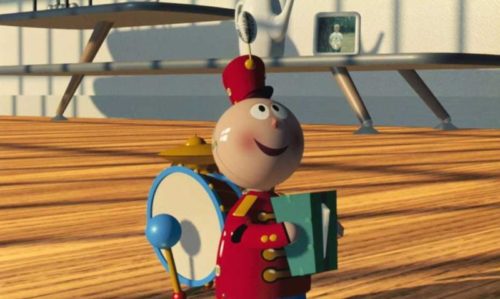
Nevertheless, Lasseter was willing to speak of the film for Fremont’s never-published Toy Story tie-in book, so it could be assumed that it was not Lasseter who chose to “forget” the debt owed Svechnikov by Toy Story, but, more probably, the executives at Disney.
At Pixar, the most widely repeated quote from the never-published book is Katzenberg’s response to a question posed to him by Stanton regarding possible screen credit for Svechnikov: “Who gives a fuck about some dead Russian? America invented toys!”
Is all of this to say that Lasseter and the many other artists who made Toy Story “stole” their movie from an earlier filmmaker? It is not. The plot and characters of Toy Story and The End of Play are nothing alike. They are very different movies with very different purposes.
And yet… It is fascinating how both movies deal directly with what it means to be a toy from the toys’ perspective, and how both films contain a character who for much of the film doesn’t know he’s a toy. The most powerful scene in each film is when the truth of that toy’s existence is revealed to him.
In Toy Story, Buzz Lightyear’s realization that he is not a space ranger, but only a plastic toy beholden to the whims of a child, is the film’s most affecting. So too the sister scene in The End of Play. It comes at the two thirds mark, during a trek through the snow to the barn to retrieve what the toys hope is a working oil-burning lamp.
Volodya, the tin fish, once the child’s favorite, believes himself to be a real fish, the leader of a school who has taken to land in order to befriend humans and bring peace between their two species. During the excursion to the barn, Olya (the ceramic goat), the sworn enemy of Volodya, knocks him into an as-yet-unfrozen stream. Volodya sinks to the bottom of the clear water, unable to swim. Olya pulls Volodya out, and it is there, shivering on the snowy bank, where Volodya comes to understand that he is not a fish, but a toy made of tin. He has no family to return to. None but the other toys.
“I cried when Volodya learns he’s made of tin,” says Lasseter. “Everyone who saw it cried. I knew Toy Story had to have a moment that affecting. I knew all my movies did.”
It is unlikely Fremont’s book will ever see the light of day. But it’s reassuring to know that, at least among a certain set of animators, the inspirational work of Amvrosi Svechnikov lives on.

This is some batshit-crazy stuff. There is absolutely nothing about this story that seems even remotely plausible and so only the fact that this tale does not involve giant crickets allows me to consider that it is, in fact, not wholly a creation of your mind.
That you would even consider for one briefly fleeting second that this is real warms my many cockled heart.
What a wonderful story. It is enchanting–bizarre and vivid and tragic–and also impossible. It is thus likely to have happened in just this fashion. Thank you for sharing it.
(As Douglas Adams noted, the impossible has an integrity which the merely improbable lacks.)
The more I think about it, the more I’m convinced that everything I wrote here is true.